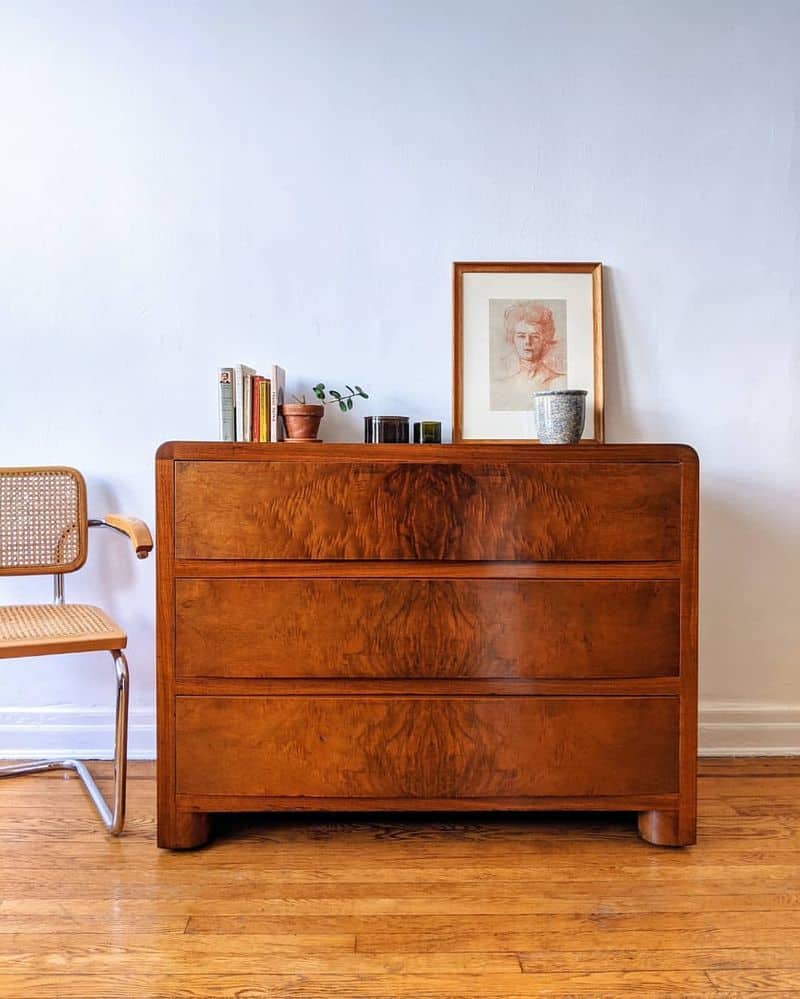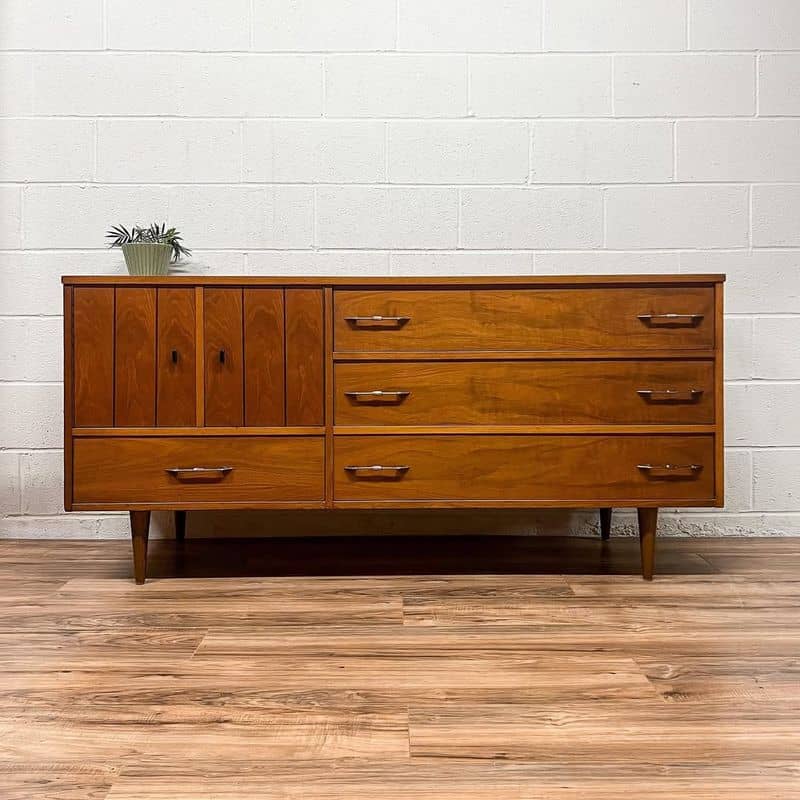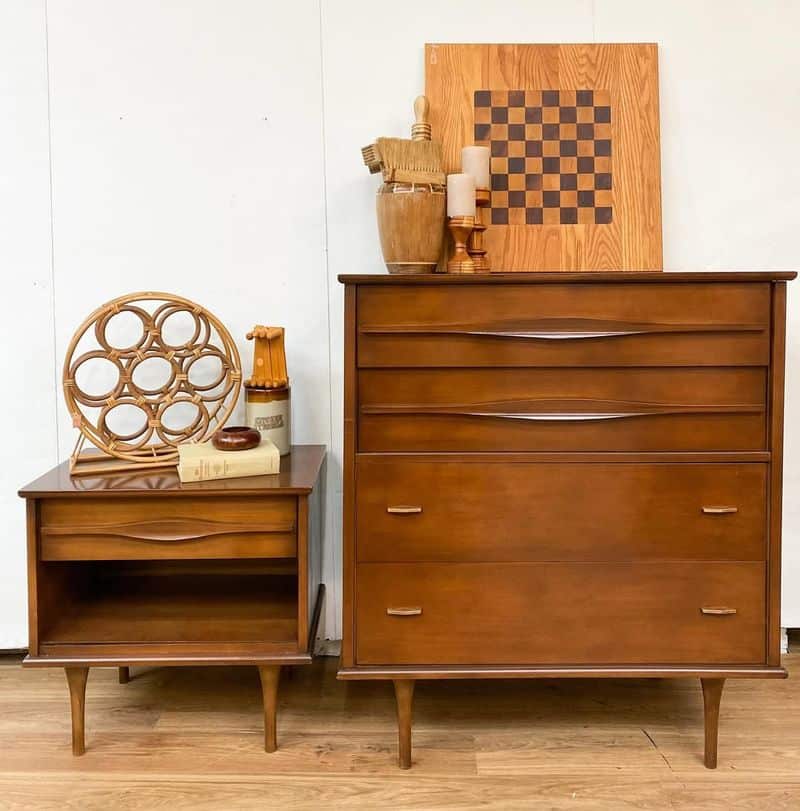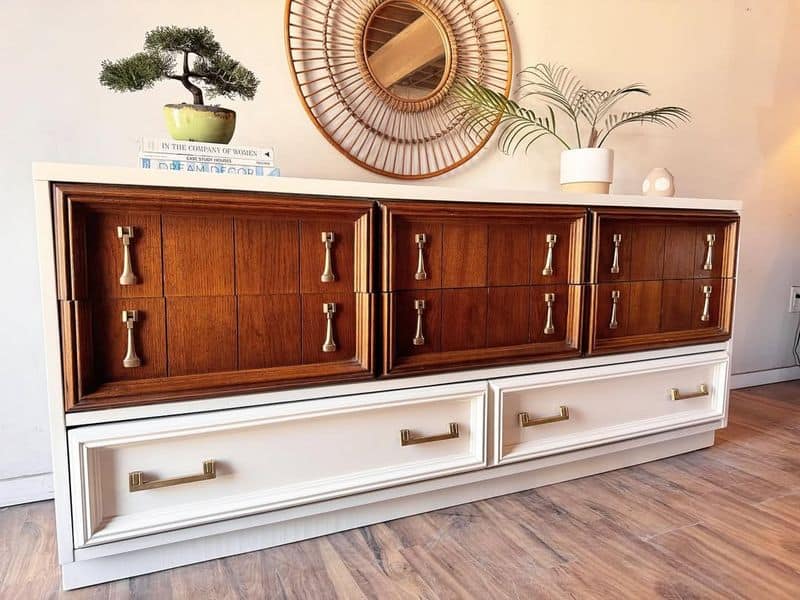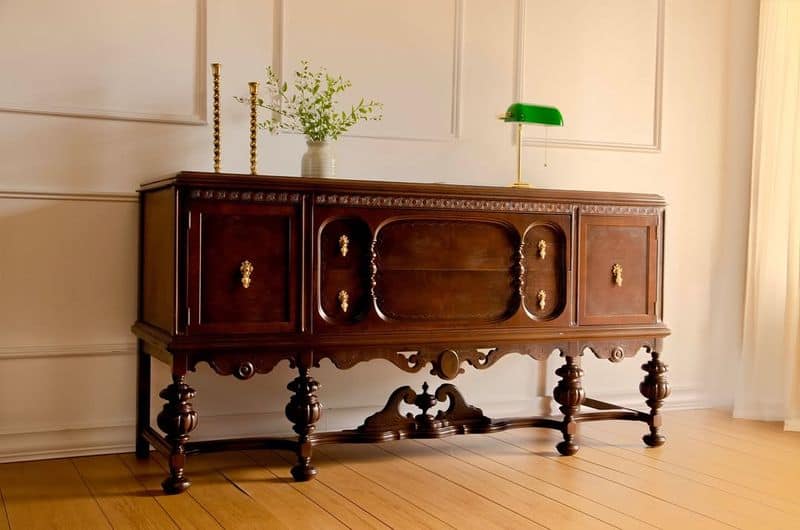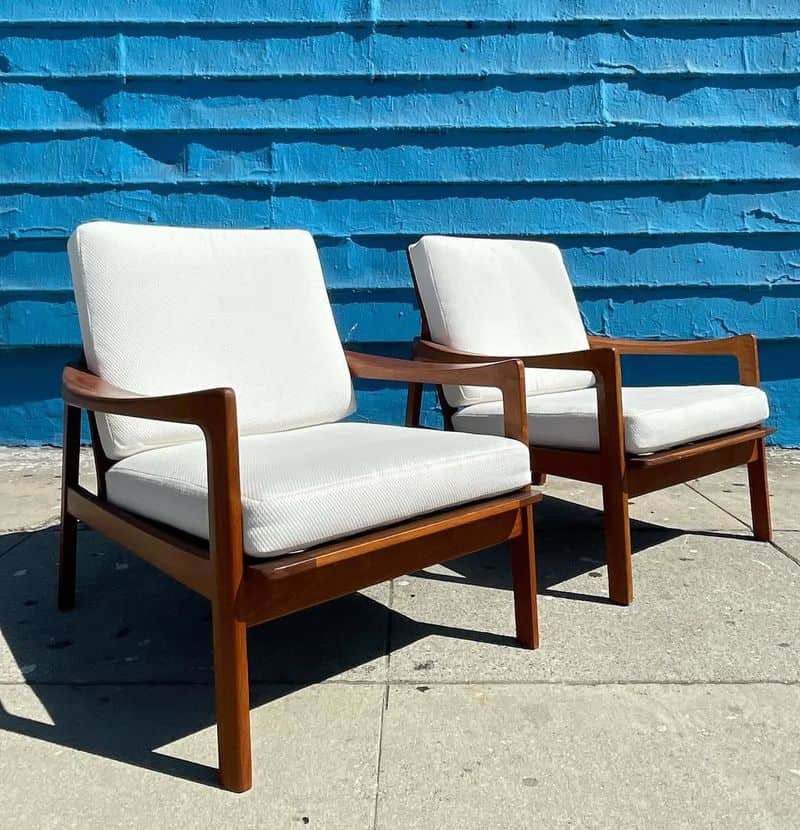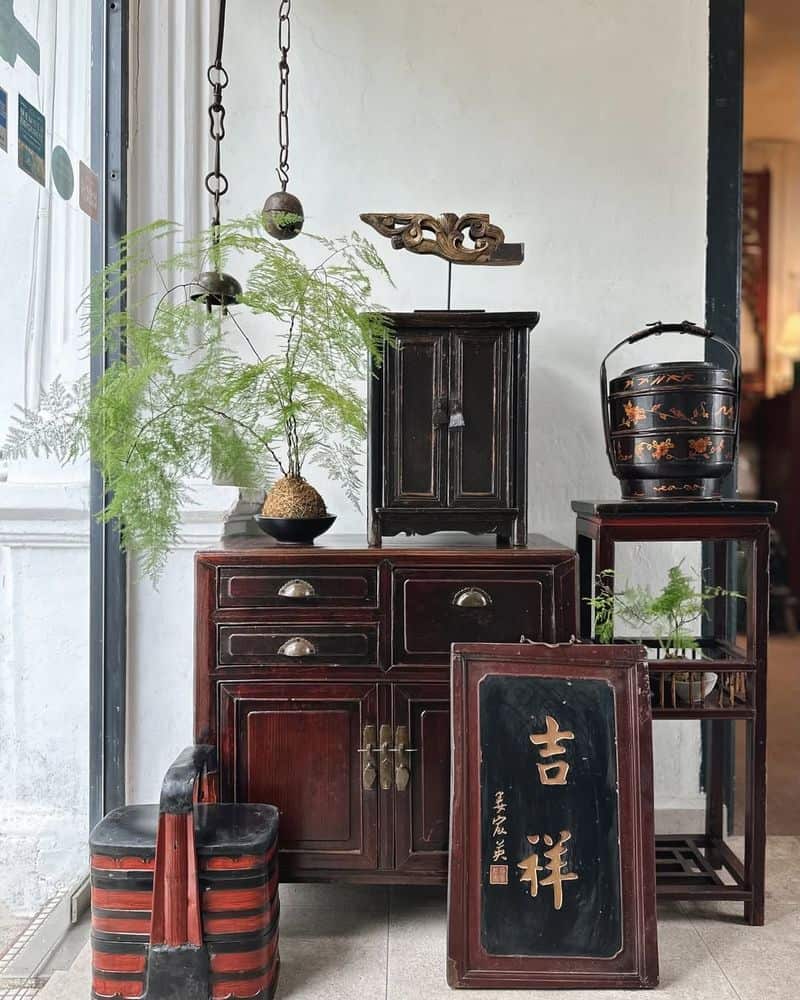Thrifting for wood furniture is not just a hobby; it’s an art form, a thrilling treasure hunt through the past. You never know what you’re going to find, which makes it all the more exciting!
Whether you’re a seasoned thrifter or a newcomer looking for quality wood pieces, these 10 pro tips will guide you on your journey to discovering furniture gems.
From understanding the nuances of craftsmanship to making the most of modern technology, enhance your thrifting experience and possibly snag an incredible find.
1. Check for Solid Wood Construction
Quality wood furniture often boasts solid wood construction. When thrifting, lift a piece to gauge its weight. Solid wood is typically heavier than veneered alternatives.
Gently scratch an inconspicuous area. Solid wood won’t show any color change, unlike veneer, which might reveal a different hue beneath.
Turn the furniture over, inspecting for plywood or particleboard. Solid wood will have consistent grain patterns, offering a visual feast for your eyes.
If you find dovetail joints, you’ve struck gold. These intricate connections scream quality craftsmanship, making your thrift store hunt worthwhile.
2. Inspect Joinery
Joinery reveals much about furniture quality. In thrift stores, examine joints for dovetails or mortise and tenon. These classic techniques indicate sturdiness and skill.
Avoid pieces with gaps or visible nails, which may signal shoddy construction.
Look beneath the surface, lifting cushions or peeking inside drawers. Quality furniture often hides its best features where eyes rarely wander.
When you spot smooth, tight joinery, you’re likely dealing with a masterpiece. Trust in these time-tested techniques to lead you to your next favorite find.
3. Assess Weight and Stability
Weight and stability tell tales of a furniture piece’s past. Lift a chair; does it feel substantial or flimsy? Heavier items often indicate solid wood construction, a hallmark of quality.
Place the piece on a flat surface, giving it a gentle nudge.
Does it wobble like a newborn fawn or stand firm like a trusted steed? Stability suggests longevity, promising continued service in your home.
When a piece sits confidently, resisting your gentle tests, chances are it’s a winner, ready to grace your living room.
4. Examine Drawer Functionality
Drawer functionality is a window into craftsmanship. Gently pull drawers to test their glide. Quality pieces offer smooth motion, free of stuttering or sticking.
Look at the interior, checking for dovetail joints, a sign of durability.
Don’t forget to examine the runners; wooden slides often accompany older, better-made items. If drawers are lined, it suggests attention to detail.
Functionality paired with fine joinery often indicates a high-quality find. After all, a drawer that moves like a dream could store your dreams, neatly tucked away.
5. Search for Maker’s Marks or Labels
Maker’s marks speak volumes. When thrifting, look beneath or behind furniture for these hidden gems.
A maker’s mark or label can tell you where a piece was crafted, its age, and possibly its lineage. Such marks often indicate quality and authenticity.
They might even lead you on a delightful research journey, uncovering stories of craftsmen from yesteryear. Don’t be shy about flipping chairs or peeking under tables.
The thrill of discovering a renowned maker’s mark can feel like uncovering treasure hidden in plain sight.
6. Perform the “Knock” Test
The “knock” test is an old trick to assess wood quality. Lightly rap on the surface; solid wood emits a warm, resonant sound, unlike the hollow thud of particleboard.
Let your ears guide you in the quest for quality. Experienced thrifters trust this simple test, a dance of knuckles and wood. It’s like listening to a piece’s heartbeat, understanding its essence.
If the sound resonates with you, chances are you’ve found something special. Trust in your instincts and let the wood speak its truth.
7. Be Cautious with Upholstered Items
Upholstered items can be tricky. Check beneath cushions and fabric for signs of wear or unwanted guests.
Stains or smells might indicate more trouble than they’re worth. Lift cushions to inspect springs and frame.
With reupholstery costs in mind, weigh the pros and cons. Sometimes, though, a hidden gem might just need a bit of TLC.
When you find a piece that speaks to you, consider its potential. With imagination and care, even a tired chair can become a beloved centerpiece.
8. Utilize Technology for Research
Embrace the digital age while thrifting. Apps like Google Lens can identify furniture and assess value on the spot.
Simply snap a picture, and let technology do the heavy lifting, bringing history and price comparisons to your fingertips.
This tech-savvy approach can reveal hidden gems and avoid costly mistakes. By marrying tradition with technology, you unlock a realm of possibilities, elevating your thrifting experience.
So, tap into the power of modern tools to uncover the stories behind each piece and make informed decisions.
9. Time Your Visits Strategically
Timing is everything. Visit thrift stores on weekdays, avoiding weekend crowds. Early mornings can be golden, as fresh donations are often put out at the start of the day.
Keep an eye on sales or clearance events for added savings.
Some seasoned thrifters even build rapport with store staff, gaining insider tips on new arrivals. By timing visits wisely, you increase your odds of finding quality pieces before others snatch them up.
It’s all about being in the right place at the right time.
10. Trust Your Instincts and Be Patient
Instincts are a thrifter’s best friend. If a piece speaks to you, listen carefully. Patience is key; don’t rush the process. Sometimes, returning empty-handed is part of the journey. Trust that the perfect find awaits.
A seasoned thrifter learns from past experiences, honing their intuition. Each visit is a lesson, each piece a story.
Enjoy the chase, and let your instincts guide you to a rewarding discovery. The patient hunter often brings home the finest trophy.


